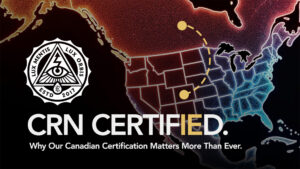
Ensuring Code Compliance:
The Importance of Annual Field Verifications for Hydrocarbon Extraction Facilities
Botanical extraction utilizes solvents such as ethanol and carbon dioxide, along with hydrocarbons like butane and propane, to separate cannabinoids from raw plant material. The resulting substances—budder, wax, shatter, and other concentrates—are used in the production of extracted products such as edibles and vaporizer oils
Powered by a blend of consumer demand, passionate thought leaders, and pure science, the botanical industry continues to grow more mainstream. But one specific sector of this thriving industry is sparking a revolution among entrepreneurs.
That sector is botanical extraction.
Beginning with raw plant material, various solvents and processing equipment are used to extract the potent cannabinoids, and the result is a pure concentrate that can be infused into a wide assortment of products.
This is no fly-by-night fad. The botanical extraction market is expected to skyrocket to more than $42 billion by 2030. That can only mean one thing: More and more companies will seek to open or expand their operations in order to break into the industry. To stay ahead of the competition, it’s crucial to understand the intricate details of extraction.
With that in mind, we put together this valuable resource for you and your team. The Botanical Extraction Glossary features all the industry terms you need to know.
More all-encompassing than “recreational use” or “medicinal use,” adult use refers to the many reasons that someone might consume botanical products.
Developed by the American Society of Mechanical Engineers (ASME), an ASME certification is a universally accepted set of safety standards. It regulates the design, manufacture, installation, inspection, and care of all pressure vessels.
Often called whole plant extracts or full spectrum extracts, broad spectrum extracts maintain the full profile of the plant. These extracts contain multiple cannabinoids beyond the obvious, and all of the terpenes.
Biomass refers to all of the plant material harvested from the field for the purpose of extracting cannabinoids. This includes botanical plant matter, as well as hemp.
Budder, an amber/yellowish substance that closely resembles butter in texture, is a type of cannabinoid-rich botanical concentrate. Along with its high potency, it contains a significant amount of terpenes and is therefore extremely flavorful.
C1D1 and C1D2 are the labels given to any laboratory setting that’s considered a hazardous area due to the risk of fire or injury. This hazard exists because of the use of flammable gas, liquids, or vapors. C1D1/C1D2 compliance refers to the safety standards for these areas as designated by the National Fire Protection Association’s Publication 70 and Occupational Safety and Health Administration.
Cannabinoids are the naturally occurring compounds found in the plant. Estimates vary, but most agree that there are close to 500 different compounds, with 80 to 100 of those compounds termed cannabinoids.
This form of botanical extract is made by separating resin from flower through the extraction process. Concentrates pack in a maximum amount of cannabinoids and potency. Used in the production of many botanical products, including edibles and vaporizers, concentrates can come in many forms:
Crude oil is the initial product that results from extraction. It is dark brown to black in color and contains many cannabinoids.
Crumble is closely related to budder, but it is opaque and light yellow with a dry and crumbly consistency.
The process purifies the active material compounds in the plant, concentrating it and increasing its stability to achieve a higher purity level.
Curing preserves the product so that it retains flavors, nutrients, and those precious cannabinoids. Curing takes place after the buds are dried, typically inside jars for a period of about two weeks.
This heating process converts inactive cannabinoids into their active versions by removing the extra carboxyl ring or group (COOH) attached to their chain.
Diamonds are crystalline structures that are created by extracting the live resin from a plant and applying pressure to that oil with the help of industrial equipment.
Produced using special equipment to eliminate all but one cannabinoid, distillate is a highly purified form of botanical concentrate. Distillation removes plant lipids, terpenes, and everything in between, leaving only highly potent cannabinoids.
The entourage effect is a widely accepted scientific theory stating that all of the botanical compounds found in the plant, along with flavonoids and terpenes, work together to enhance the overall benefits of consumption.
Extraction refers to the process of converting botanical biomass into cannabinoid concentrate using solvent-based or solventless technologies, such as hydrocarbons, CO2, and ethanol.
Extraction equipment constitutes all the gear you need to process raw plant material into its concentrated forms. It’s this equipment that separates a professional extraction facility from less serious operations. Here’s all the extraction equipment, large and small:
The filtration process removes lipids that come to the surface of a solution. It is typically performed after winterization using vacuums and pumps, but paper filters can also be used.
Flavonoids are phenolic compounds that are formed inside trichomes. They help develop aroma, flavor, and color.
Flower is the term used to refer to the smokable part of the female plant.
A variety of the plant grown specifically for the industrial uses of its derived products, hemp is used to make items including paper, clothing, furnishing fabric, rope, and building materials. The 2018 Farm Bill defines hemp as having less than 0.3% psychoactive content. The 2018 Farm Bill defines hemp as having less than 0.3% psychoactive content.
ISO 9001:2015 is the quality management standard developed and published by the International Organization for Standardization (ISO). For extraction equipment, ISO 9001:2015 demands that the manufacturer meets customer and regulatory requirements.
Isolate is a multipurpose crystalline solid or powder containing pure cannabinoids.
An extraction facility also includes a laboratory where most of the prep and processing takes place. Laboratory equipment includes:
Live resin is a concentrate made from plant material that has not been dried or cured.
Mechanical separation refers to solventless extraction. Instead of chemicals, it employs agents such as water or ice to extract compounds from raw plant material.
A Colorado-based organization, Pressure Safety Inspectors (PSI) conducts end-to-end safety certification inspections and reviews for companies that manufacture botanical extraction equipment.
After crude oil is extracted and filtered, the result is refined oil. This has slightly higher levels of cannabinoids and is therefore a more potent product.
This post extraction process removes fats, waxes, chlorophyll, and other impurities.
Rosin is a concentrate made through an extraction technique that manipulates fine materials using high pressure and temperature, resulting in cannabinoid-rich resin.
Sauce is a form of concentrate with a sticky, liquid-like consistency. These extractions boast intense flavors and contain extra-high levels of terpenes.
Shatter is a brittle, glass-like concentrate named for the way it shatters when broken. It’s translucent and honey-like, with amber and dark yellow.
Solvents are chemicals added to a closed-loop system to extract cannabinoids and terpenes from plant material. There are many different solvents one can use in solvent-based extraction system, such as:
Governed by Underwriters Laboratories, UL Certified to ANSI/CAN/UL/ULC 1389 refers to manufacturing equipment for the botanical extraction and processing industry that’s deemed safe for operational use.
UL Listed components are equipment parts that have met safety standards as defined by Underwriters Laboratories. Equipment labeled at “UL Listed” indicates that the product complies with national safety and sustainability requirements.
A concentrated oil that results from the extraction process. Similar to budder, it’s malleable and easy to manipulate.

The Importance of Annual Field Verifications for Hydrocarbon Extraction Facilities

CRN Certified.

In the cannabis extraction industry, the margin for error is shrinking—literally. As larger operations dominate the market with aggressive pricing and vertically integrated models, small

Our Revolutionary Refrigeration Tech Reaches Cryogenic Temperatures We’re proud to announce a major leap in refrigeration science: our newly patented refrigeration system, capable of reaching

Recent closures should mean an upgrade for your lab!

Scaling Up with Illuminated Extractors: The Ultimate Solution for Expanding Labs As cannabis extraction labs scale their operations, the need for equipment that can handle

Certified in all 50 States
All Illuminated Extractors extraction models have received Technical Report Certification authored by Pressure Safety Inspectors (PSI). All models have been peer-reviewed for Safety and compliance in all 50 states. Please contact us for more information about certifications for your local AHJ.
Illuminated Extractors LTD – All Rights Reserved. Copyright © 2017-2025. Privacy Policy | Terms & Conditions